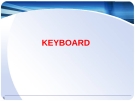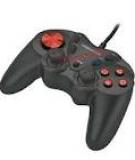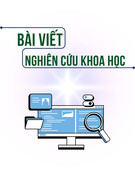9.6. CDs & DVDs
This handy pane (Figure 9-5) lets you tell the Mac what it should do when it detects you've inserted a CD or DVD. For example, when you insert a music CD, you probably want iTunes (Chapter 11) to open automatically so you can listen to the CD or convert its musical contents to MP3 or AAC files on your hard drive. Similarly, when you insert a picture CD (such as a Kodak Photo CD), you probably want iPhoto to open in readiness to import the pictures from the CD into your photo collection. And when you insert a DVD from Blockbuster, you want the Mac's DVD Player program to open.
Figure 9-5. You can tell the Mac exactly which program to launch when you insert each kind of disc, or tell it to do nothing at all.
For each kind of disc (blank CD, blank DVD, music CD, picture CD, or video DVD), the pop-up menu lets you choose options like these:
• Ask what to do. A dialog box appears that asks what you want to do with the
newly inserted disc.
• Open (iDVD, iTunes, iPhoto, DVDPlayer…). The Mac can open a certain program automatically when you insert the disc. When the day comes that somebody writes a better music player than iTunes, or a better digital shoebox than iPhoto, you can use the "Open other application" option.
•
• Run script. If you've become handy writing or downloading AppleScript programs (Chapter 7), you can schedule one of your own scripts to take over from here. For example, you can set things up so that inserting a blank CD automatically copies your Home folder onto it for backup purposes. Ignore. The Mac won't do anything when you insert a disc except display its icon on the desktop. (If it's a blank disc, the Mac does nothing at all.)
UP TO SPEED System Preferences: Under the Hood
The entire System Preferences program is nothing more than a series of graphical front ends for underlying Unix settings. (If you know Unix and feel so inclined you can, in fact, bypass the System Preferences panel completely. Using the defaults command, you can use Mac OS X's Terminal program to
make any of the changes described in this chapter—and many others.)
The individual Preferences panes are represented by package icons (Section 5.1.3) in your various Library folders. For example, icons in the basic Leopard
set are in System Library PreferencePanes. Mac OS X also looks for
Library PreferencePanes folder, if preferences modules in the Network there is one.
(All of this is handy to remember when the day comes that you want to delete a Preferences pane.)
Now suppose you've downloaded some new Preferences module, and you want to install it. Just double-clicking a downloaded System Preferences pane does the trick.
If you prefer manual control, you can put a downloaded module into your Home
Library PreferencePanes folder. The beauty of this arrangement, of
course, is that everyone who shares a Mac now can see a different assortment of customized Preference panes.
If you're an administrator, you can create a Preference-Panes folder in the Mac's main Library folder, so that everyone with an account on the Mac (Chapter 12) can access your newly added panes.
When you install some new System Preferences pane like TinkerTool, Adobe VersionCue, or TiVo Desktop, it takes the form of a new icon in one of those four PreferencePanes folders. That's good to know when the day comes that you want to remove one of these add-on panes.
Within the System Preferences program, any new panes you add in this way appear in a new row of icons labeled Other (at least when you're viewing System Preferences in Category view).




































